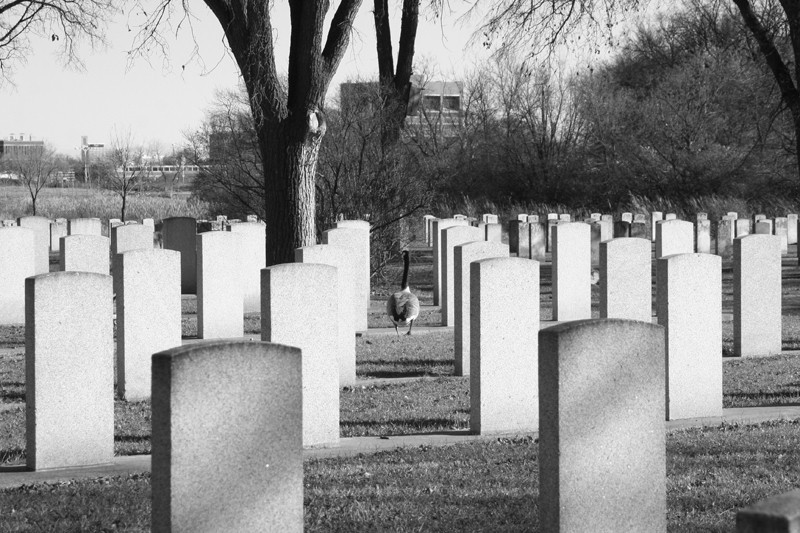Exploring the meaning of Remembrance Day
Nov. 10 is well-known as being one of the biggest bar nights of the year.
However, after an evening of partying, getting up to go to a Remembrance Day service is not always on the partygoer’s mind.
“I think ‘does this day get the respect it deserves?’ is a question each individual needs to ask themselves,” said Jane Saxby, cemeteries administrator for the City of Winnipeg. “I don’t think there is an apathy – I think they don’t understand the meaning of Remembrance Day.”
Brookside Cemetery in Winnipeg, home to the graves of 12,000 Canadian soldiers, is holding interactive tours during Remembrance week, Nov. 5 to Nov. 10, during which people can view the graves as well as meet surviving veterans.
Saxby is excited that, during Remembrance week, 250 school-aged children will be visiting Brookside for a tour. She believes that it is especially important for them to interact with the veterans who are still alive today to learn firsthand experiences of war.
Duncan McMonagle, journalism instructor for the Creative Communications program at Red River College, agrees.
“I think it’s very important for people, starting as children, to make a distinction between glorifying war, which is not what Remembrance Day is about, and honouring the people who’ve fought and suffered in wars – and I think that’s a distinction that even kids can understand,” he said.
For the past eight years, McMonagle has been using an assignment he created to help educate his journalism students about Remembrance Day.
The assignment requires students to attend a Remembrance Day service and report on the event, as well as speak to a veteran about their personal experiences for a separate article.
“I think it opens them up to the realization that armed conflict affects a lot more of us than many have realized,” McMonagle said. “And, it puts personal faces on the news that we hear everyday – ‘another Canadian soldier dead in Afghanistan,’ it puts personal faces on stories like that.”
That’s what Shelley Cook, a second-year journalism student in the program experienced when she did the project last year.
She and a group of fellow students joined a group of veterans for a round of beers after the service for a more comfortable atmosphere of storytelling and conversation.
Cook reminisced about one veteran who gave her a European sovereign coin and told her his story.
“It just really humanized it – talking to these old men who were so willing to share their stories with us,” she said. “Actually talking to people who have gone through this, it opens your eyes that we should be extremely thankful.”
Cook said before doing the assignment she had never been to a Remembrance Day service outside of the public school system, but now plans to make it an annual tradition.
She believes that young people should take the time to give the day the respect it deserves.
“It can be a sombre day, but it is one designated day out of the year,” she noted. “I don’t think we need to mourn, but to go out and party is another thing.”
Published in Volume 65, Number 10 of The Uniter (November 4, 2010)







